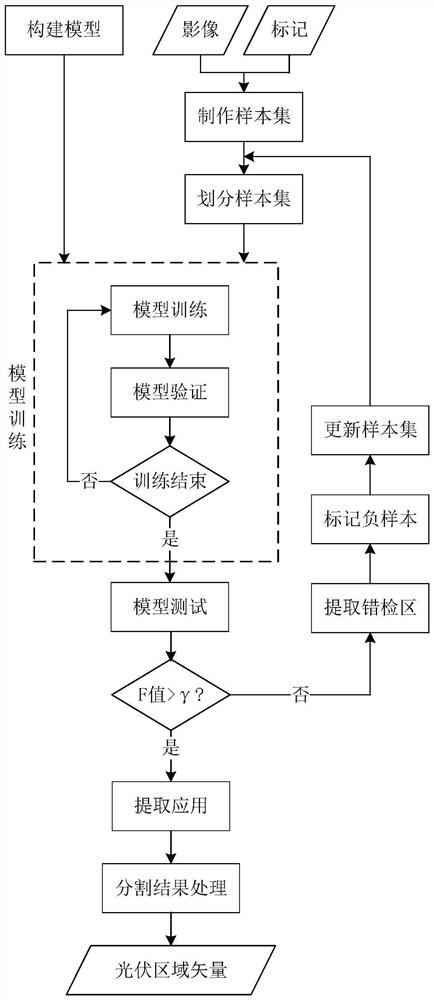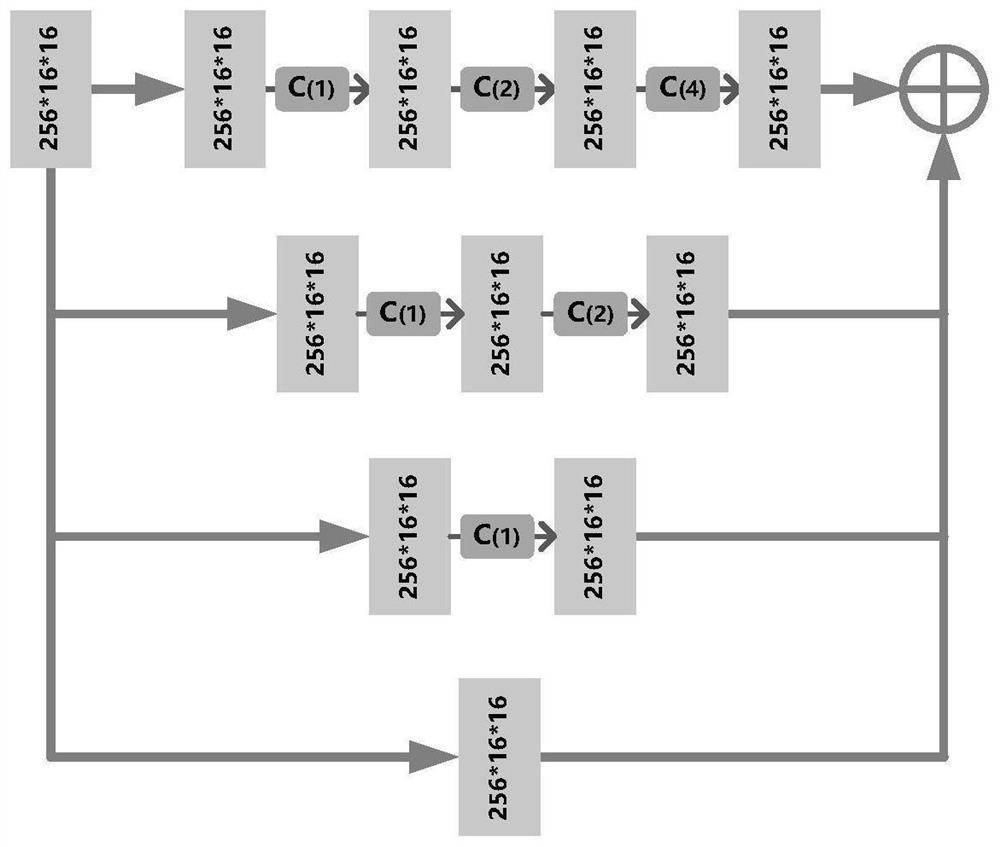A remote sensing intelligent extraction method for large-scale photovoltaic power generation facilities
A technology for photovoltaic power generation and extraction methods, which is applied in neural learning methods, instruments, biological neural network models, etc., to achieve rapid automatic extraction and improve extraction efficiency and accuracy.
- Summary
- Abstract
- Description
- Claims
- Application Information
AI Technical Summary
Problems solved by technology
Method used
Image
Examples
Embodiment 1
[0046] This embodiment provides a remote sensing intelligent extraction method for large-scale photovoltaic power generation facilities, such as figure 1 shown, including the following steps:
[0047] S1. Using pytorch as the development framework, construct the extraction network PVSNet based on the semantic segmentation model D-LinkNet. PVSNet is designed to receive 3×512×512 image samples as input, and the encoder (Encoder) is based on the pre-trained ResNet34 network, using five The downsampling layer extracts deep image features. The middle expansion layer (Dilate-block) uses 4 layers of parallel cascaded hole convolution to expand the acceptance range, integrate multi-scale features, and preserve spatial information. The decoder (Decoder) uses a four-layer transposed convolution unit to upsample the feature map, and uses skip connections to introduce the underlying spatial position information to restore the details in the original image. Finally, Softmax is used to ob...
Embodiment 2
[0067]In this embodiment, taking high-resolution image data in some areas of Shanxi Province as an example, a specific implementation process of a remote sensing intelligent extraction method for photovoltaic power generation facilities is given, including the following steps:
[0068] Step 1. Use pytorch as the development framework, and build the extraction network PVSNet based on the semantic segmentation model D-LinkNet. In this program, PVSNet is designed to receive 3×512×512 image samples as input, and the encoder (Encoder) is based on the pre-trained ResNet34 network. Five down-sampling layers are used to extract deep image features; the middle expansion layer (Dilate-block) uses 4 layers of parallel cascaded hole convolution to expand the acceptance range, integrate multi-scale features, and preserve spatial information; Decoder (Decoder) The four-layer transposed convolution unit is used to upsample the feature map, and the skip connection is used to introduce the unde...
PUM
 Login to View More
Login to View More Abstract
Description
Claims
Application Information
 Login to View More
Login to View More - R&D
- Intellectual Property
- Life Sciences
- Materials
- Tech Scout
- Unparalleled Data Quality
- Higher Quality Content
- 60% Fewer Hallucinations
Browse by: Latest US Patents, China's latest patents, Technical Efficacy Thesaurus, Application Domain, Technology Topic, Popular Technical Reports.
© 2025 PatSnap. All rights reserved.Legal|Privacy policy|Modern Slavery Act Transparency Statement|Sitemap|About US| Contact US: help@patsnap.com



